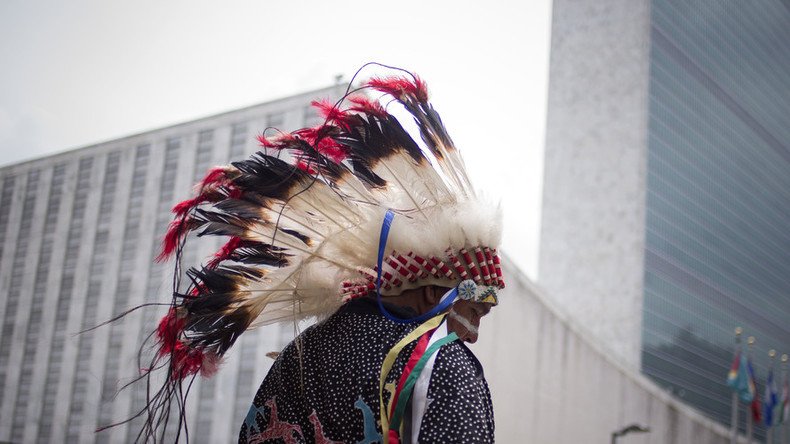Dying Native American languages set for funding boost from US Senate

The long-term survival of 148 indigenous languages spoken by people living in North America before the European invasion starting in 1492 may be getting a boost from the US Senate, after a new bill was passed unanimously by the Indian Affairs committee.
If the Esther Martinez Native American Languages Preservation Act passes the full Congress and receives President Barack Obama's signature, it will help prevent the predicted death of the languages within the next 100 years.
By funding language programs and cultural preservation for the next four years, the act hopes to revive interest in the few remaining Native American languages, of which 83 percent are spoken by fewer than 1,000 people, according to the US census.
Tester Takes Another Step to Revitalize and Expand Native American Languages https://t.co/RCy8vdsoGzpic.twitter.com/5yrCP99R4n
— NativeNewsOnline (@Native_NewsNet) May 12, 2016
Montana Senator Jon Tester, the main sponsor of the bill and committee vice chair, said that preservation of the languages and culture enhanced overall learning by the next generation.
“Students who take Native language courses do better in school and are more connected to their community. It is critical to Indian Country that this legislation and other Native language bills move forward on the Senate floor,” Tester told Native News.
Tester’s Native Language Immersion Student Achievement Act was passed by the Committee last October, allocating $5 million in grants each year to tribes, colleges, and universities. The Esther Martinez Act will extend the time period organizations have to reapply for the grant.
S. 1419, Native Language Immersion Student Achievement Act https://t.co/uWI2kwAR1C
— CBO Cost Estimates (@USCBOcostest) December 18, 2015
Just 67 percent of Native Americans graduate from high school, well below the national average of 80 percent.
When Europeans first arrived in the US, more than 300 different languages were spoken among the various tribes.
However, between the 1880s and 1920s, Native American children were sent to always "Euro-American", usually "Christian" boarding schools with the aim of assimilation.
Along with having their hair cut, a sacred offense in many indigenous cultures, children were prohibited from speaking their native language and forced to converse in English, which Indian Affairs Commissioner TJ Morgan described as "the language of the greatest, most powerful, and enterprising nationalities beneath the sun.”
The Esther Martinez Act is named after the Tewa tribe storyteller, who attended one of the boarding schools as a child and went on to fight for the preservation of the Tewa language.
She died in a car crash in 2006 at the age of 94 while returning home from collecting a National Heritage Fellowship in Washington DC.
Esther Martinez was a linguist & storyteller for the Tewa people of NewMexico. http://t.co/NJFdupC0d9#WomenWednesdaypic.twitter.com/gWsiIBUseu
— Native Encyclopedia (@nativepedia) December 31, 2014
Today, fewer than half a million people in the US speak Native North American Languages, compared to 60 million who speak a non-English language and the 227 million who speak English, according to the census.
The data does offer some hope for the future as one in five children ages five to 17 who identify as Native American or Alaskan speak a Native language, compared to just one in ten elders ages 65 and older.
However, several of the languages are at a high risk with only one remaining speaker left.
Here are just a few of those who carry the linguistic legacy of their ancestors, which may walk on from this earth when they do.












